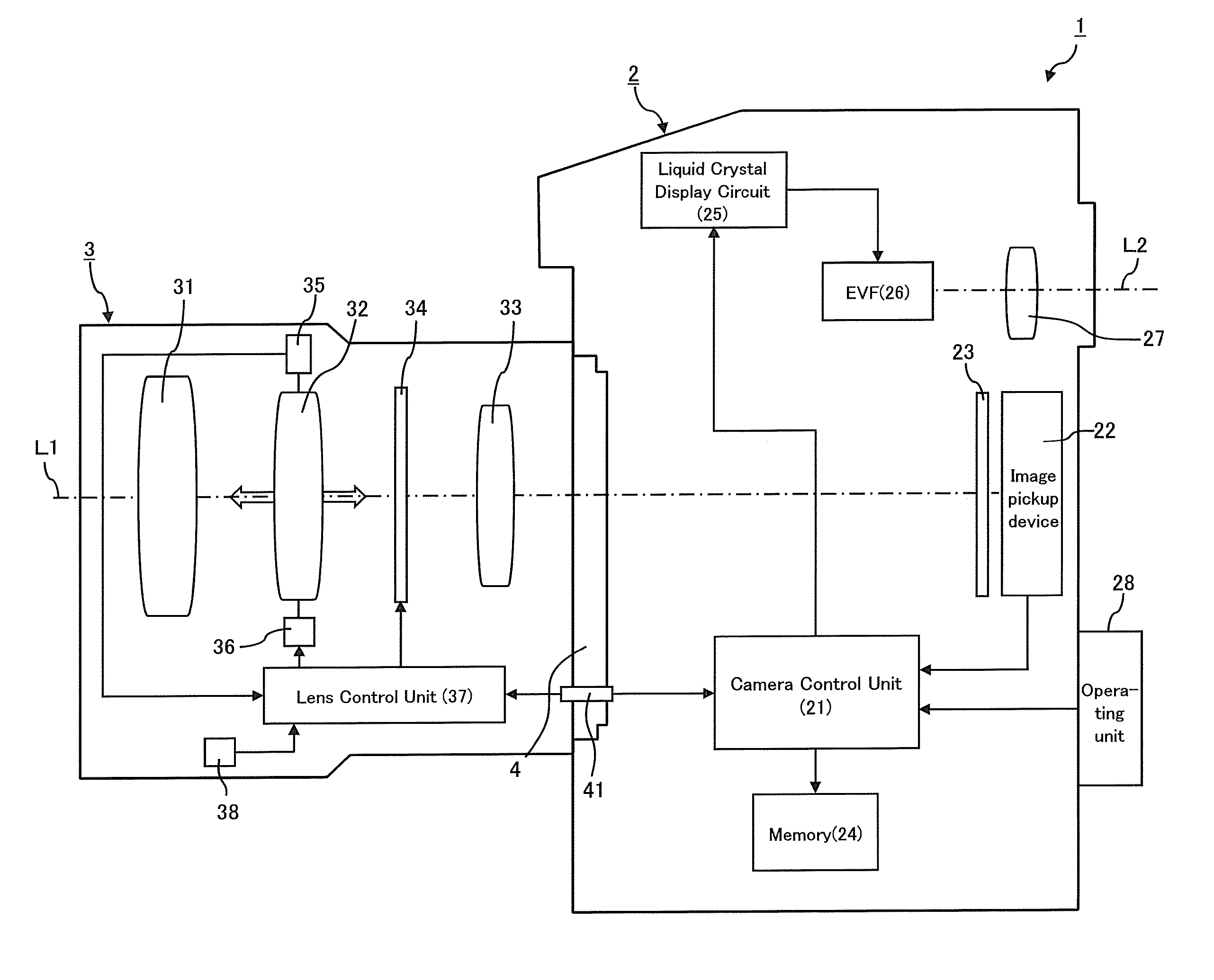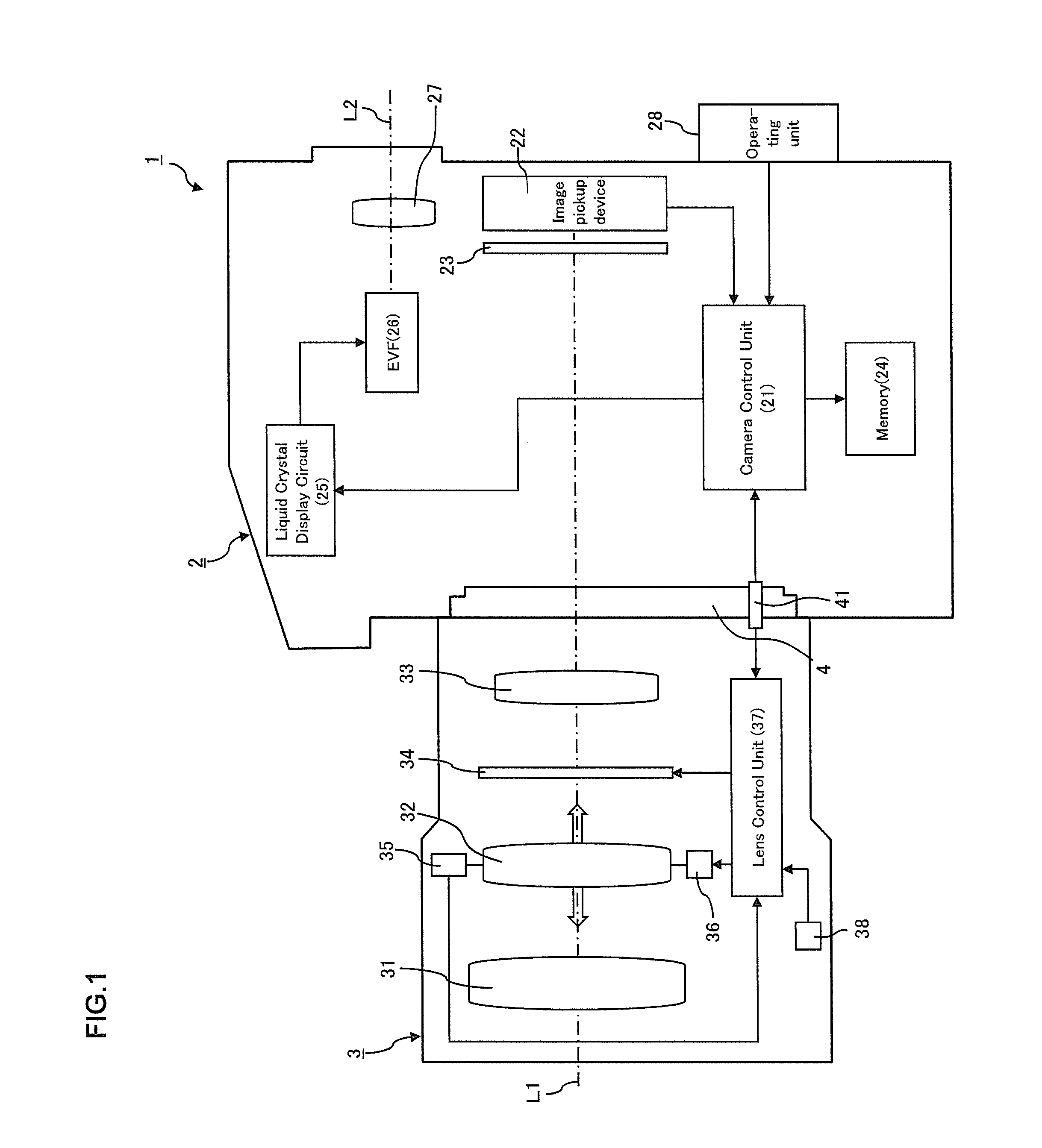Focus adjustment device and imaging apparatus
a technology of adjustment device and imaging apparatus, which is applied in the direction of focusing aids, instruments, television systems, etc., can solve the problems of time-consuming and difficult adjustment of focus, and achieve the effect of adjusting focus
- Summary
- Abstract
- Description
- Claims
- Application Information
AI Technical Summary
Benefits of technology
Problems solved by technology
Method used
Image
Examples
first embodiment
[0052]FIG. 1 is a view of the principal configuration which shows a digital camera 1 according to an embodiment of the present invention. The digital camera 1 of the present embodiment (below, simply referred to as the “camera 1”) is comprised of a camera body 2 and a lens barrel 3. These camera body 2 and lens barrel 3 are connected by a mount 4 in a detachable manner.
[0053]The lens barrel 3 is an interchangeable lens which can be detachably attached to the camera body 2. As shown in FIG. 1, the lens barrel 3 has built into it an imaging optical system which includes lenses 31, 32, and 33 and an aperture 34.
[0054]The lens 32 is a focus lens. By moving it in the optical axis L1 direction, the focal distance of the imaging optical system can be adjusted. The focus lens 32 is provided in a manner movable along the optical axis L1 of the lens barrel 3. An encoder 35 is used to detect its position while a focus lens drive motor 36 is used to adjust its position.
[0055]The specific consti...
second embodiment
[0126]Next, a second embodiment of the present invention will be explained based on the drawings. The second embodiment is similar to the first embodiment other than, as shown in FIG. 14, the operation of the camera 1 in the camera 1 which is shown in FIG. 1. FIG. 14 is a flow chart which shows the operation of the camera 1 according to the second embodiment. Note that, the following operation is started by the power of the camera 1 being turned on and the shutter release button which is provided at the operating unit 28 being half pressed (first switch SW1 on). Further, below, the explanation will be given with respect to the example of the continuous mode, that is, the mode of continuously detecting the focused state of the optical system and thereby capturing an image at a focus lens position corresponding to the object without fixing the position of the focus lens 32, being selected.
[0127]At step S201, in the same way as step S103 of the first embodiment, processing for calculat...
third embodiment
[0147]Next, a third embodiment of the present invention will be explained based on the drawings. The third embodiment is similar to the first embodiment other than, as shown in FIG. 15, the operation of the camera 1 in the camera 1 which is shown in FIG. 1. Below, referring to FIG. 15, the operation of the camera 1 according to the third embodiment will be explained. Note that, FIG. 15 is a flow chart which shows the operation of the camera 1 according to the third embodiment.
[0148]First, as shown in FIG. 15, at step S301, in the same way as step S103 of the first embodiment, the phase difference detection system is used to calculate the amount of defocus. Further, at step S302, the camera control unit 21 is used to judge if the drive of the focus lens 32 based on the results of detection by the phase difference detection system, that is, the drive of the focus lens 32 based on the amount of defocus, is being prohibited. If drive of the focus lens 32 based on the results of detectio...
PUM
 Login to View More
Login to View More Abstract
Description
Claims
Application Information
 Login to View More
Login to View More - R&D
- Intellectual Property
- Life Sciences
- Materials
- Tech Scout
- Unparalleled Data Quality
- Higher Quality Content
- 60% Fewer Hallucinations
Browse by: Latest US Patents, China's latest patents, Technical Efficacy Thesaurus, Application Domain, Technology Topic, Popular Technical Reports.
© 2025 PatSnap. All rights reserved.Legal|Privacy policy|Modern Slavery Act Transparency Statement|Sitemap|About US| Contact US: help@patsnap.com



